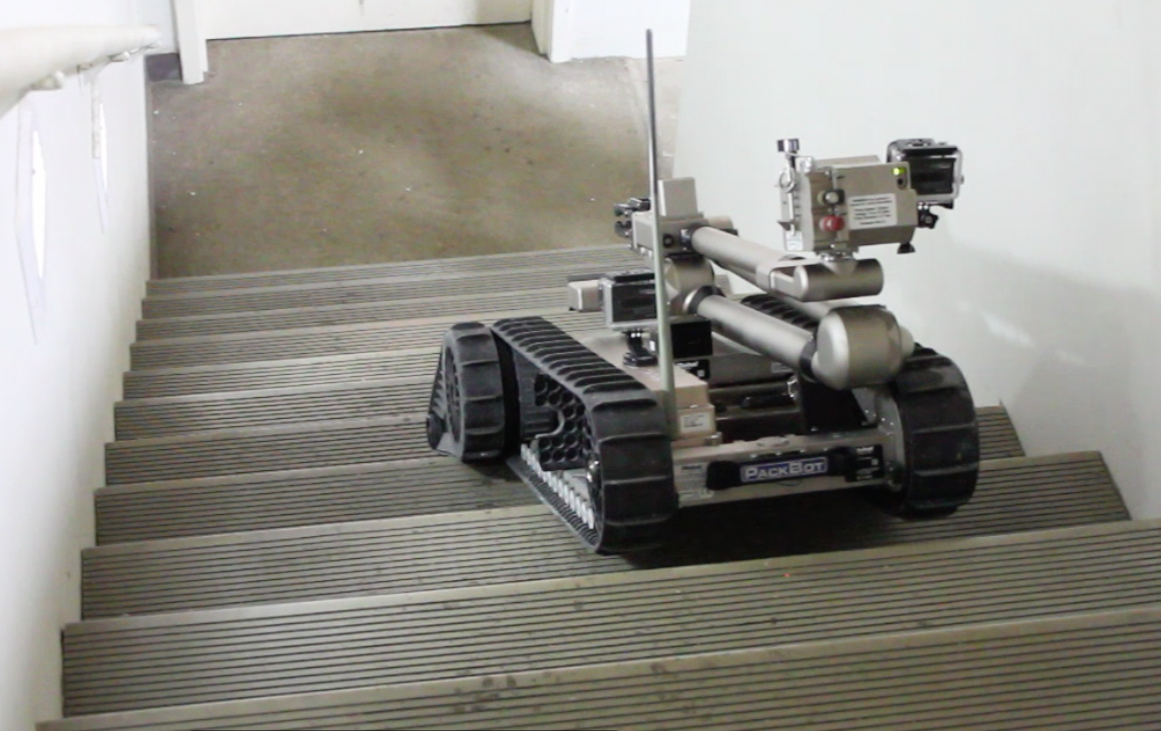In late April 2014, a commercial fire in southern New Yorkconsumed a100-year-old town landmark. The building housed afamily-owned business and the large number of combustibles such asfurniture, upholstery, and a wooden elevator shaft turned thestructure into an inferno. Tremendous heat and concerns about thestructure collapsing forced firefighters to combat the blaze fromexterior locations including the rooftop of the attachedbuilding.
|Structural integrity remained a concern as the local firedepartment investigated the fire and representatives from thepolicyholder's insurance carrier arrived in response to the largeloss. Early indications were that the origin of the blazewas an electrical box on the first floor, but because the top twostories of the five-story building had collapsed in on thestructure, it was unsafe for anyone to enter.
|Donan, a forensic investigation firm that has gained widespreadrecognition for its work with unmanned aerial vehicles (UAVs), alsoknown as drones, thought that drones could be used to document thefire scene. After reviewing images and Google Earth views of thestructure, Donan's president and CEO, Lyle Donan, didn't think UAVswould be an appropriate fit.
|"There are significant logistical challenges to operating a UAVindoors and in the dark, both of which were going to be the case inthis fire scene," Donan explained.
|While assessing the challenges associated with the fire loss,Donan recalled a conference where he met representatives fromiRobot, a company that specializes in robotic technology. "Ithought to myself, why couldn't a robot work for thisinvestigation?" Donan recalls. "There was only oneproblem. We didn't have a robot."
||
After in-depth discussions with Kim Monti, senior productmanager at iRobot, Donan purchased the iRobot 510 PackBot. Montidescribes the 510 PackBot as "a modular, multi-mission robot" thatcan accommodate a wide range of accessories and has beenextensively field tested. More than 4,500 units have been deliveredworldwide, most for use in military and law enforcement capacitieslike screening vehicles and structures for explosives andneutralizing bombs.
|The PackBot has cameras in several locations to capture bothstill images and video. The video includes first-person views ofwhat the robot is "seeing," as well as images of the robot itself,all of which are relayed back to the operational control unit (OCU)in real time. In New York, the operator was David Fletcher ofiRobot, who explained that "just like in a first-person video game,I've got to be able to see the machine and its surroundings tomaneuver it effectively." The connection between therobot and the OCU is a wireless radio connection, according toMonti who confirmed that internet access is not required foroperation. "The PackBot is designed for use in rugged terrain, soit can't rely on wireless internet or 4G."
|Treads and flippers enable the robot to navigate diverseterrain, including rolling over rubble and going up and downstairs. A three-link arm can carry items up to 12 pounds at fullextension and 30 pounds at closer range, which is useful forclearing debris and retrieving evidence. Both of these featureswere essential for the investigation. The PackBot movedover and around piles of debris from the fire, and traveleddownstairs to the basement in order to document all areas ofconcern. The robot also located and retrieved the alarmpanel from the first floor, which was one of the primary objectivesfor the inspection.
|When asked about the cost of the robot, Donan characterized theinvestment as "significant," indicating an out-of-the-box price inthe low six figures, but added that "the applications for theproperty claims industry are extensive" with fire investigationsbeing a prime example.
|While the client did not disclose what they paid for theinvestigation, they confirmed that the results were worth theprice. "When it comes to large losses, carriers want to get thingsright and answer all the questions they can. There werethings that needed to be seen on the first floor and in thebasement, but the structure wasn't stable, so their options werelimited. Partnering with us to use the PackBot enabledthem to get high-quality images and video quickly and safely, at afraction of the cost of manual demolition," Donan explained.
|| 
Close-up video and photographs of the electrical service paneland smoke detectors located in the basement were also obtained bythe robot. Images showed the electrical box on the first floor asmostly intact with no surrounding burn patterns to suggest it wasthe origin of the fire. Investigation of the basementshowed burn patterns around a work area where interviews withemployees confirmed that they had been working prior to the fireand had disposed of items in the trashcan located where the imagessuggested the fire originated.
|Local authorities closed the case citing several possibleaccidental causes – with the items in the trashcan being one. Donanwas pragmatic in their assessment. "When a loss is covered, theinsurance company pays the claim. If there is subrogationpotential, they pursue it. That's what it means to be aresponsible insurer," explained Ray Baker, Donan's regional firemanager. "By working with Donan to use the robot, they gotconclusive answers in a safe manner, saved significant time andexpense, and provided better service to their insured."
|Donan said the policyholder was impressed by the entire process."You have this building that means the world to you and it burnsdown and you want to know what happened," said Donan, adding thatthe structural issues with the building made the insured uncertainwhether a cause could be identified. "Then your insurance companygoes to extraordinary lengths to get you an answer. Theyactually brought in a robot! Nothing changes the fact that theylost this place and its history, but at least we were able toassist in determining why."
|Based on the robot's success in New York, Donan is working withcarriers to better understand when and how this technology can beused. Instances of compromised structural integrity are at the topof the list. Fire origin and cause determinations can bedifficult if investigators can't look for burn patterns, collectevidence or document a scene. Even when the cause of thedamage is known – for instance, an earthquake – questions relatedto subrogation may require visual assessment. Applications also exist for investigating confined spaces,detecting hazardous materials and working in hazardousenvironments.
||
"Maybe it's a minefield, maybe it's a meth lab or maybe it'sjust a burnt warehouse that may collapse at any moment, but thereare certain situations where it's not safe to send a personin. That's true for the authorities and for our militaryand for people in our industry as well. In thoseinstances, using a robot adds real value," Donan said.
|Professional engineer Matthew Kenney joined Donan's ComponentTesting Laboratory in 2008 and began leading the company's researchand development effort on UAVs in early 2013. Operatingunmanned ground vehicles and exploring their application ininvestigations was a natural extension of that role.
|Asked about the difficulty associated with controlling thePackBot, Kenney said, "They (iRobot) make it pretty easy tooperate. The controller looks and feels just like an Xboxcontroller and there are lots of preset positions so you don't haveto manually do every little thing." Even so, he estimates he spentat least 200 hours practicing before he operated the robot in thefield for a client. "It's not enough to be able to do what you needto," Kenney explained. "You have to be efficient; youhave to be an expert."
|The New York fire was one example of how out-of-the-box thinkingresulted in an innovative solution to a very real problem. Robotsand other unmanned vehicles can be deployed in places wheredetermining a cause of loss was once a dangerous or arduousundertaking due to structural or environmentalthreats.
Want to continue reading?
Become a Free PropertyCasualty360 Digital Reader
Your access to unlimited PropertyCasualty360 content isn’t changing.
Once you are an ALM digital member, you’ll receive:
- All PropertyCasualty360.com news coverage, best practices, and in-depth analysis.
- Educational webcasts, resources from industry leaders, and informative newsletters.
- Other award-winning websites including BenefitsPRO.com and ThinkAdvisor.com.
Already have an account? Sign In
© 2024 ALM Global, LLC, All Rights Reserved. Request academic re-use from www.copyright.com. All other uses, submit a request to [email protected]. For more information visit Asset & Logo Licensing.








